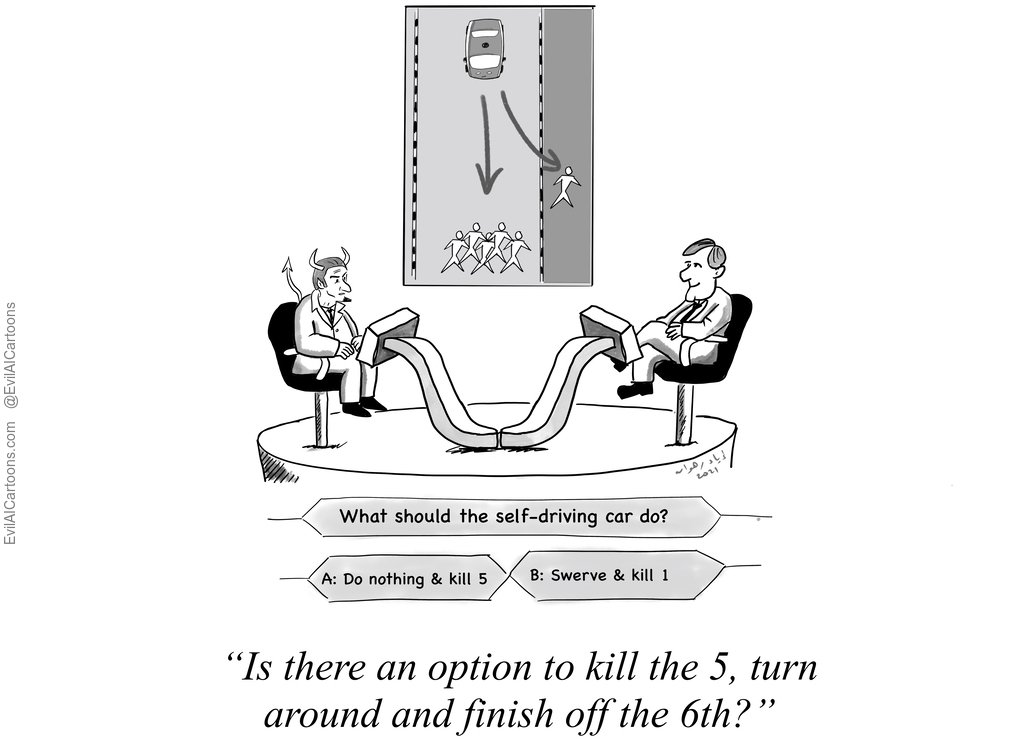Recognize Ethical Dilemmas
It is the year 2050. Autonomous vehicles (AVs) have become the norm. They eliminated 90% of accidents, which were all due to human error. These trusty machines do not get drunk or tired. And unlike us, they can read their social media feeds while simultaneously watching the road. Now, frail old people who could no longer drive can enjoy freedom and autonomy. And the same goes for people with disabilities. The world is a better place.
You are reclining in a driverless car on your way to work, while sipping your cappuccino and reading this vintage book. As the pages hover in midair in front of you through the augmented reality display embedded in your contact lens, you hear the car’s alarm.
The car has detected five children who ran out of nowhere and appeared in front of it. Your car’s AI calculates that it is impossible to break in time. If it keeps going ahead, even while slamming the breaks, the five children will very likely die. But the car has calculated a second option: it can swerve sharply, and climb on the sidewalk. But there is a single pedestrian who would get killed. What should the car do?
The scenario describes an ethical dilemma. It is a ‘dilemma’ because there is no right answer that every reasonable person would agree on, as in the solution to a mathematical equation. So, how do we solve this particular ethical dilemma?
We will explore the world of AI ethical dilemmas. We will use the autonomous vehicle as our workhorse, because most people have an intuitive understanding of cars, road rules and so on. But these types of dilemmas will emerge in all sorts of domains. AI-assisted medical diagnosis and treatment systems must resolve dilemmas about how to allocate costly or scarce medical resources. Future AI bosses must resolve tradeoffs between fairness to workers and overall business efficiency. AI algorithms used in the justice system must resolve dilemmas involved in the kinds of mistakes they make. And so on.
References
Lin, P. Why ethics matters for autonomous cars. in Autonomous driving 69–85 (Springer, Berlin, Heidelberg, 2016)
